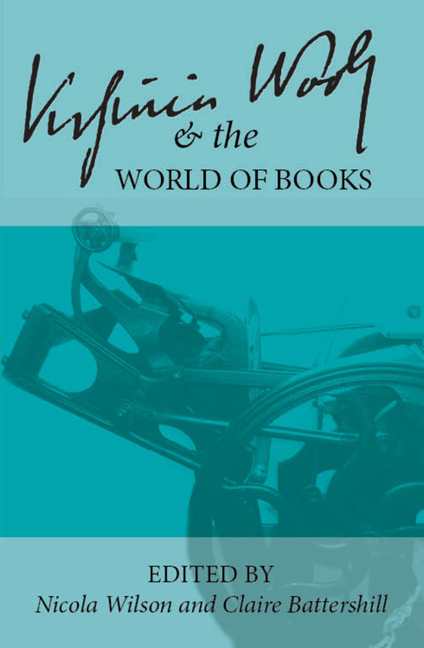 Virginia Woolf and the World of Books
Virginia Woolf and the World of Books Book contents
- Frontmatter
- Contents
- Introduction
- List of Abbreviations
- Keynote
- In the Archives
- Craftsmanship
- “Wood is a pleasant thing to think about”: William Blake and the Hand-Printed Books of the Hogarth Press
- Virginia Woolf, the Hogarth Press, and “Short Things”
- “Scarcely a Brick to Be Seen”: Breaking Boundaries in “Kew Gardens” and “The Mark on the Wall”
- Virginia Woolf's Arts and Craftsmanship
- The Hogarth Press
- Hours in A Library
- The Art of the Book
- The Art of the Narrative
- Making New Books: Creative Approaches
- The Book in the World: Woolf's Global Reception
- Editing and Teaching Woolf
- Intertextuality
- Lives in Writing
- Notes on Contributors
“Scarcely a Brick to Be Seen”: Breaking Boundaries in “Kew Gardens” and “The Mark on the Wall”
from Craftsmanship
- Frontmatter
- Contents
- Introduction
- List of Abbreviations
- Keynote
- In the Archives
- Craftsmanship
- “Wood is a pleasant thing to think about”: William Blake and the Hand-Printed Books of the Hogarth Press
- Virginia Woolf, the Hogarth Press, and “Short Things”
- “Scarcely a Brick to Be Seen”: Breaking Boundaries in “Kew Gardens” and “The Mark on the Wall”
- Virginia Woolf's Arts and Craftsmanship
- The Hogarth Press
- Hours in A Library
- The Art of the Book
- The Art of the Narrative
- Making New Books: Creative Approaches
- The Book in the World: Woolf's Global Reception
- Editing and Teaching Woolf
- Intertextuality
- Lives in Writing
- Notes on Contributors
Summary
In a diary entry written in 1920, Virginia Woolf imagines merging elements from her stories “Kew Gardens” and “The Mark on the Wall” in order to create a style that could apply to novels as well as short stories:
Suppose one thing should open out of another—as in An Unwritten novel— only not for 10 pages but for 200 or so—doesn”t that give the looseness and lightness that I want: doesn't that get closer & yet keep form and speed, & enclose everything, everything? […] I figure that the approach will be entirely different this time: no scaffolding; scarcely a brick to be seen; all crepuscular, but the heart, passion, humour, everything, as bright as fire in the mist. […] conceive mark on the wall, K[ew]. G[ardens]. & unwritten novel taking hands and dancing in unity (D2 13–14).
When considering the combination of “The Mark on the Wall” and “Kew Gardens” Woolf invokes the image of a structure without scaffolding or barriers. She associates her chosen style with “looseness, lightness,” while the images of “crepuscular” darkness and “mist” suggest an indeterminate environment with imperceptible limits. Notably, she describes the need to enclose her subject without restricting it, to create a metaphorical wall with “scarcely a brick to be seen.” This essay examines how “The Mark on the Wall” and “Kew Gardens” depict this notion of a surrounding, yet porous boundary, and asks how this concept came to be reflected in the production and presentation of the texts themselves.
“The Mark on the Wall” was the first work that Woolf published with the newly established Hogarth Press. Rather than featuring a traditional plot, it constitutes a meditation on the perception of objects and the nature of knowledge. At the start of the text the narrator notices a mark on the wall above the mantelpiece and questions what it might be. They imagine it is “a nail, a rose leaf, [or] a crack in the wood,” (82) and as they weigh up each likelihood their mind wanders through various thoughts and ideas. Finally, after having considered a great number of possibilities and their implications, they realize that the mark is a snail. The structure of the work is formed around a single question and answer; the narrator poses a problem at the beginning of the text and by the end it is apparently resolved.
- Type
- Chapter
- Information
- Virginia Woolf and the World of BooksSelected Papers from the Twenty-seventh Annual International Conference on Virginia Woolf, pp. 56 - 61Publisher: Liverpool University PressPrint publication year: 2018


